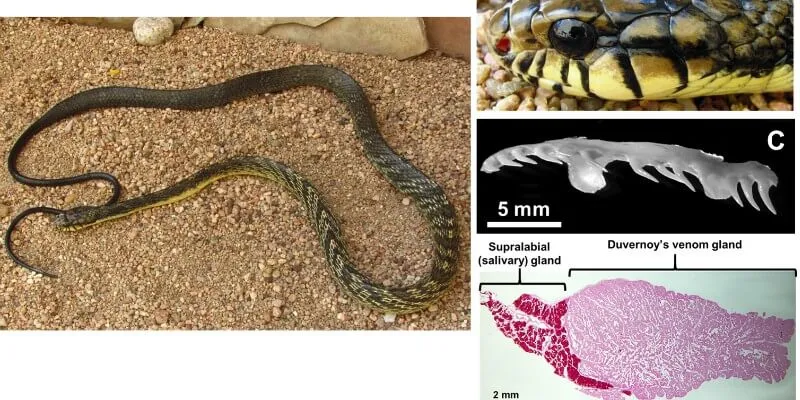Three recently published studies by Biomedical Science Professor Seth Frietze investigate venomics – the comprehensive study of venoms from venomous animals by analytical scientific approaches. Venoms contain complex proteins and enzymes that hold medical potential. Venom proteins also evolve rapidly, providing excellent models for predator-prey evolutionary studies. Dr. Frietze and colleagues explore the composition of venom proteins and their genes to better understand predator-prey relationships as well as the medical applications for venom proteins.
For these studies, Frietze collaborated with researchers in the School of Biological Sciences at University of Northern Colorado and National University of Singapore.
“My collaborators do all the snake work. I do the molecular and bioinformatics work,” Frietze said. “The Frietze lab is interested in ‘big data’ approaches to measure complex mixtures of DNA, RNA and protein from different types of clinical and biological material. This current work investigates the complex enzymes of snakes and seeks to understand their function in adaptation to different types prey.”
One study, published August 1 in the Proceedings of the Royal Society Biological Sciences, reveals that Amazon puffing snake venom toxin genes evolved to allow capturing prey that is more nutritious. The research team captured three of these six-foot long snakes. They then extracted the snakes’ venom and analyzed it to see which toxins were present. They found two distinct toxins, one of which is lethal to birds and lizards and birds but not mammals. The second toxin is lethal only to mammals. The snakes typically eat birds and lizards but have recently added mice to their diets. Evolutionary analysis and structural modeling of the venom indicate that the second toxin evolved to allow the snake to capture rodents, which are more nutrient-dense than birds or lizards. These results represent an example of adaptation via venom gene duplication, allowing for broader prey use.
An earlier study, published in the Journal of Proteomics, identifies toxins in venom of rear-fanged brown treesnakes. The research team found differences in toxins between young and adult snakes, which likely correlates to shifts in prey preference between the two age classes, from nearly-exclusively lizards to lizards, birds and small mammals.
A third study, accepted August 3 for publication in the Journal of Proteomics, for the first time characterizes the venoms of rear-fanged snakes. This study reveals venom genes encoding enzymes called metalloproteinases and three-finger toxins that allow prey capture through incapacitation and induction of hemorrhage by directly affecting capillary blood vessels.
Frietze also uses molecular technologies to investigate gene expression in the pathological progression of cancer. Since joining the Department of Biomedical and Health Sciences in 2015, he has co-authored numerous research papers on cancer transcriptomes (RNA), epigenomes (DNA structures) and genome sequencing of cancer cells. He is actively involved in the Vermont Cancer Center and with University of Vermont Medical Center clinical partners.
While running an active research program, Frietze mentors multiple graduate and undergraduate students in his laboratory. He seeks to train his students to use innovative techniques and apply basic research skills to address important biomedical questions.
